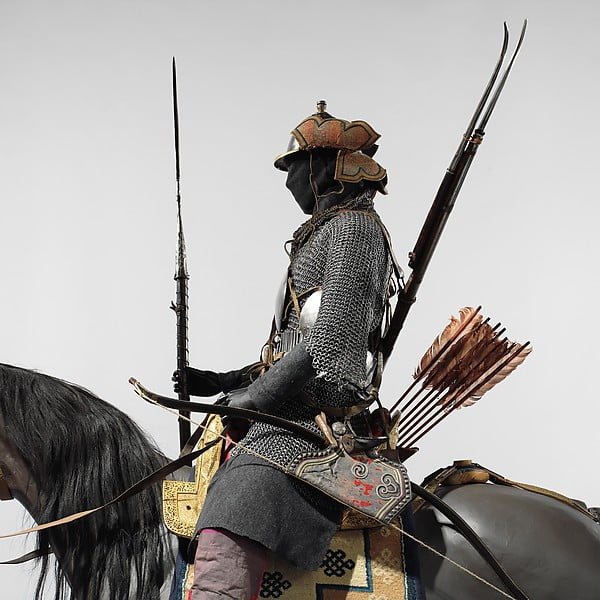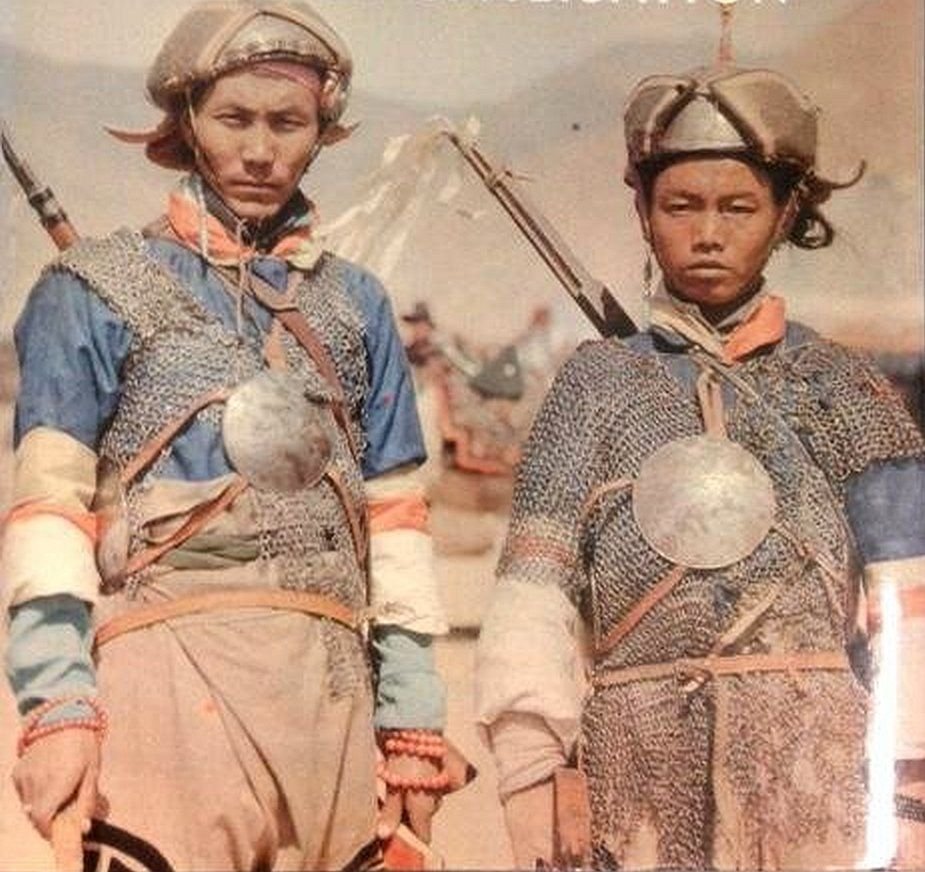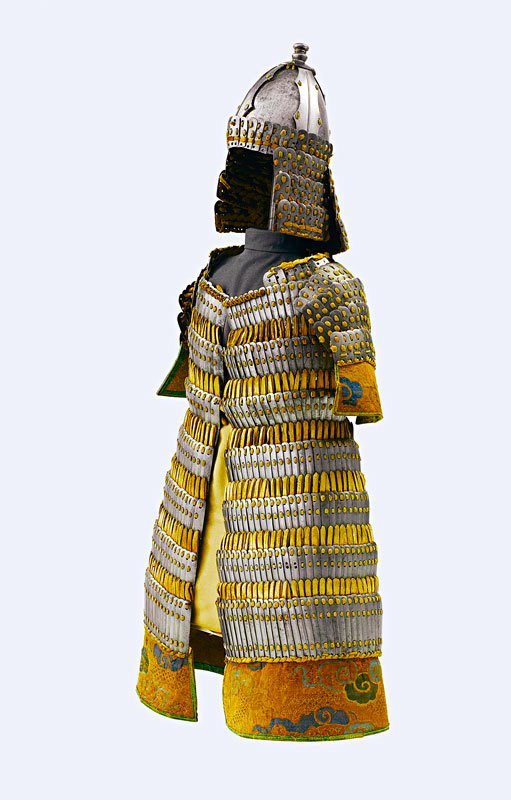Origin of Chain mail Armor in Central Asia
Chain mail armor, also known as “Ktrab, (ཁྲབ།)”. It is believed to have been invented by the Scythians, an ancient nomadic group. Speaking an Eastern Iranian language, these Indo-European people descended southward from Northern Asia into the Central Asian steppes. Their era ended in the 3rd century BC, marking a significant shift in historical narratives.
The Spread of Chain mail Armor
During 500 years of conflict and conquest with ancient regimes in Central Asia and Eastern Europe, the Scythians contributed significantly to military history. Their invention of chain mail armor not only advanced westward, potentially influencing the Celts and Ancient Rome, but it also flourished in medieval Europe. Remarkably, it reached its zenith in Central Asia, especially during the pre-Islamic Sassanian Persian era (224–651 AD).
Cultural Exchange along the Silk Road
This period was a pinnacle of cultural exchange between Central Asia and China, particularly through the Silk Road. Artifacts and ideas, including chain mail armor, were frequently mentioned in historical records, symbolizing this exchange.
Historical Records in China
An account in the “Book of Jin” describes the encounter of the Former Qin general Lü Guang with “Kuaihu” cavalry in 384 AD in the Kingdom of Kucha. Notably, these warriors were adept at archery and spear fighting, and wore chain mail armor that was impervious to arrows, indicating the presence of Central Asian chain mail armor in the region during this time. More extensive records of chain mail armor in China appear in the Tang dynasty.

Tibetan Chain mail Armor in Chinese Literature
The Tang dynasty statesman and historian Du You documented Tibetan chain mail armor in his work “Tongdian – Tufan Zhuan.” He noted the exceptional craftsmanship of the armor, which covered the entire body except for the eyes and was impervious to powerful bows and sharp blades.
This historical journey of chain mail armor, from its Scythian origins to its significance in Central Asian and Chinese military history, reflects the dynamic cultural and technological exchanges along the ancient Silk Road.
The Mastery of Chain mail Armor in the Tibetan Empire
Exceptional Craftsmanship of Tibetan Chain mail Armor
Tibetan warriors in the Tibetan Empire, particularly during the reign of Songtsen Gampo, actively used “锁子甲” or chain mail armor. These warriors utilized the “heavy full-body” type of armor, and what’s even more fascinating is that they equipped their horses with chain mail as well.
The Mature Application of Chain mail Armor
During the Tibetan Empire’s rule, especially after Songtsen Gampo’s unification of the Tibetan Plateau, chain mail armor not only became a staple in their military arsenal but also saw widespread usage. Variants such as full-body chain mail and hybrid chain mail were utilized.
The First Mention of Tibetan Chain mail in Chinese Records
In the “Old Book of Tang,” there’s an account of Tang general Guo Zhiyun’s raid on the Tibetan Empire in the year 718 AD. During this expedition, the Chinese forces acquired Tibetan chain mail for the first time, marking the precise period when Tibet had matured in its use of chain mail armor.

The Introduction of Chain mail to Tibet
Before the dominance of the Tibetan Empire in the 4th and 5th centuries, chain mail armor was already present in the Western Regions (Xiyu). At that time, the Tibetan Plateau was not yet unified under the rule of the Yarlong alliance, the precursor to the Tibetan Empire. Instead, various tribal alliances, such as the Zhangzhung and SumBi (Sun Bo) in the west, and the Tuyuhun in the north, controlled different regions of the plateau. These political entities had relatively frequent interactions with the Western Regions and even Central Asia.
Influence from Sassanian Persia
Scholars speculate that chain mail armor likely made its way to the Tibetan Plateau during this period, possibly influenced by Sassanid Persia. This transmission could have occurred as early as the 4th or 5th century. As the Tibetan Empire rose to power and incorporated regions like Zhangzhung, Sum Bi (Sun Bo), and Tuyuhun through conquest, chain mail armor continued to develop and find significant application in their military.
Increased Flow through Central Asia
By the early 8th century, there was an increased flow of chain mail armor into Tibet, especially from Central Asia. This was due to the thriving armor manufacturing industry and arms export trade in cities like Samarkand and Sogdiana in Central Asia. Additionally, the Tang Dynasty’s legal restrictions on civilian trade in such military equipment further supported the idea that high-quality military gear, including chain mail armor, came from Central Asia to the Tibetan Empire.
The Resounding Legacy of Tibetan Chain mail Armor
During the rise of the Arab Empire and the decline of Persia, Tibet engaged in frequent military interactions with both the Arab and Tang Chinese forces. In the 8th century, Tibet alternated between alliances with and against the Arab and Tang forces in the competition for control over the Western Regions.
The Tibetan Empire, known for its inclusive politics and extensive cultural exchange, combined with its expansionist military tactics, made the Tibetan Plateau the earliest and most prolific region for the development and widespread use of chain mail armor in ancient China. It also holds the record for the longest duration of chain mail armor usage in world military history.

The Global Impact of Tibetan Chain mail Armor
Chain mail Armor in the Arab Empire
The fame of Tibetan chain mail armor, known as “吐蕃锁子甲,” reached its zenith during the military interactions between Tibet and the Arab Empire. Arabic texts even mention the significant import of Tibetan armor into the Arab world. Together with other renowned Tibetan products like “吐蕃盾” (Tibetan shields) and “吐蕃麝香” (Tibetan musk), Tibetan goods gained worldwide recognition, spreading across Central Asia and even reaching Western Europe.
Positive Influence on the Spread to China
The influence of Tibetan chain mail armor also played a positive role in its dissemination to China. So much so that even in the Ming Dynasty, discussions about chain mail armor still referred to it as “古西羌制” (ancient Western Qiang made), showcasing its profound impact.
Influence on Tibetan Terminology
Regarding Tibetan language records about chainmail armor, researchers like Da Shu could not find the specific term. However, some interesting observations emerge. In Tibetan, the term “ཁྲབ།” (khrab) generally refers to armor. This term originally meant fish scales, but it’s believed that in ancient Tibetan, “ཁྲབ།” likely referred to scale-like armor plates. When “混合型锁子甲” (hybrid chainmail armor) was introduced, it might have been called “ཁྲབ།” due to the involvement of scale armor components.
Discovery of an Intriguing Tibetan Term
After extensive research and with the help of friends, we discovered an intriguing Tibetan term that specifically denotes “锁子甲”: “ཚེམ་ཚེམ།” (tshe-mtshe-m). Its original meaning is “to patch” or “to sew.” However, when textile threads were replaced by small iron rings and the material became a protective garment, the ancient Tibetans chose this direct and conceptually appropriate term to refer to “锁子甲.” This discovery adds an intriguing dimension to the history of chain mail armor terminology.
Tibetan Terminology Definition
For reference, here is the definition of “ཚེམ་ཚེམ།” (tshe-mtshe-m) in a Tibetan dictionary:
གནའ་དུས་མཚོན་ཆ་སྲུང་བྱེད་ལྕགས་ཀྱི་ཨ་ལོང་ཆུང་ངུ་མང་བོ་བསྒྲིགས་པའི་གྱོན་ཆས་ཤིག་གི་མིང་།
Translation: An ancient military defense equipment made of small iron rings assembled in a manner resembling patches.
The history of Tibetan chain mail armor is a testament to its significance in both military and linguistic contexts, leaving an indelible mark on the pages of history.



















